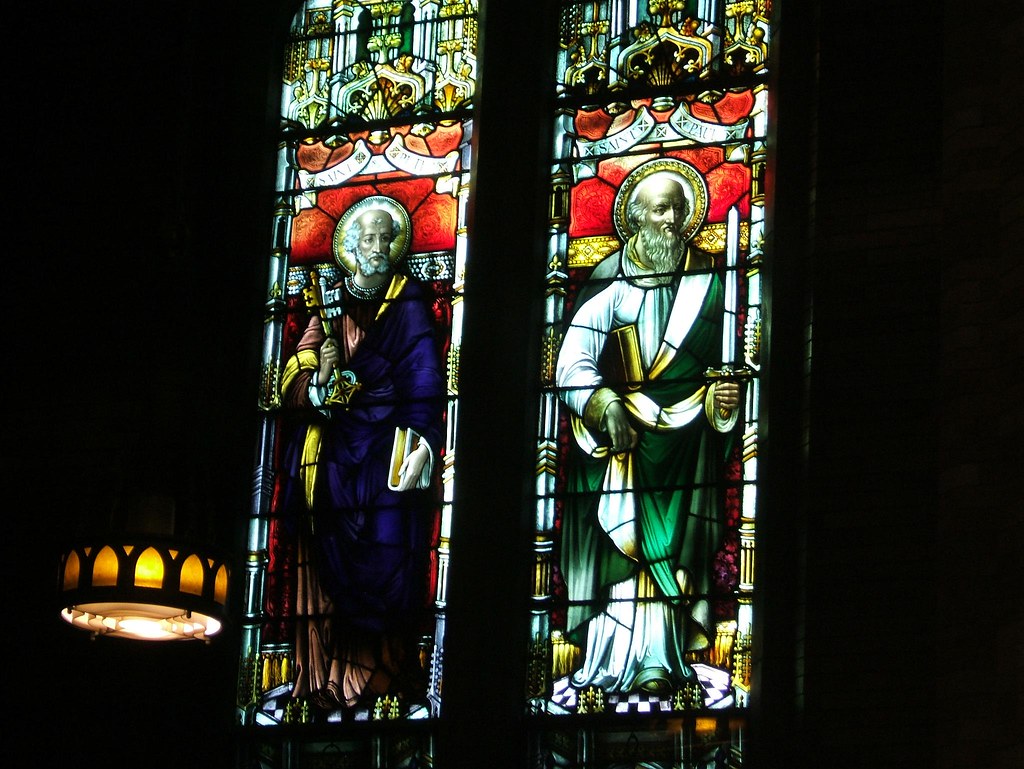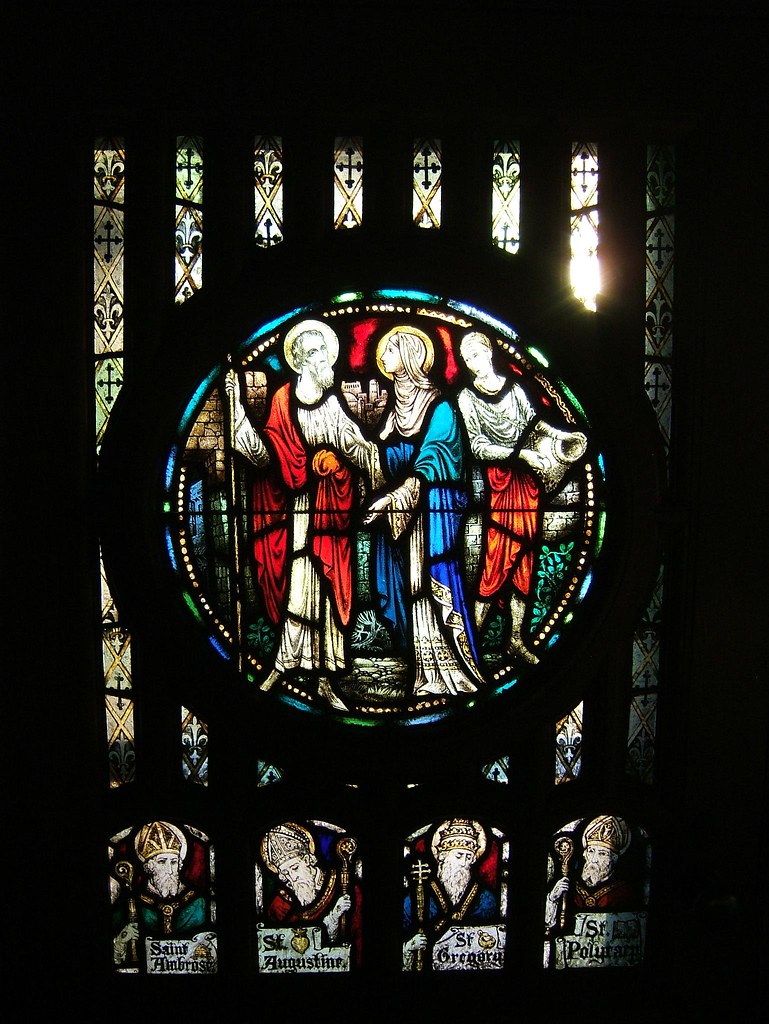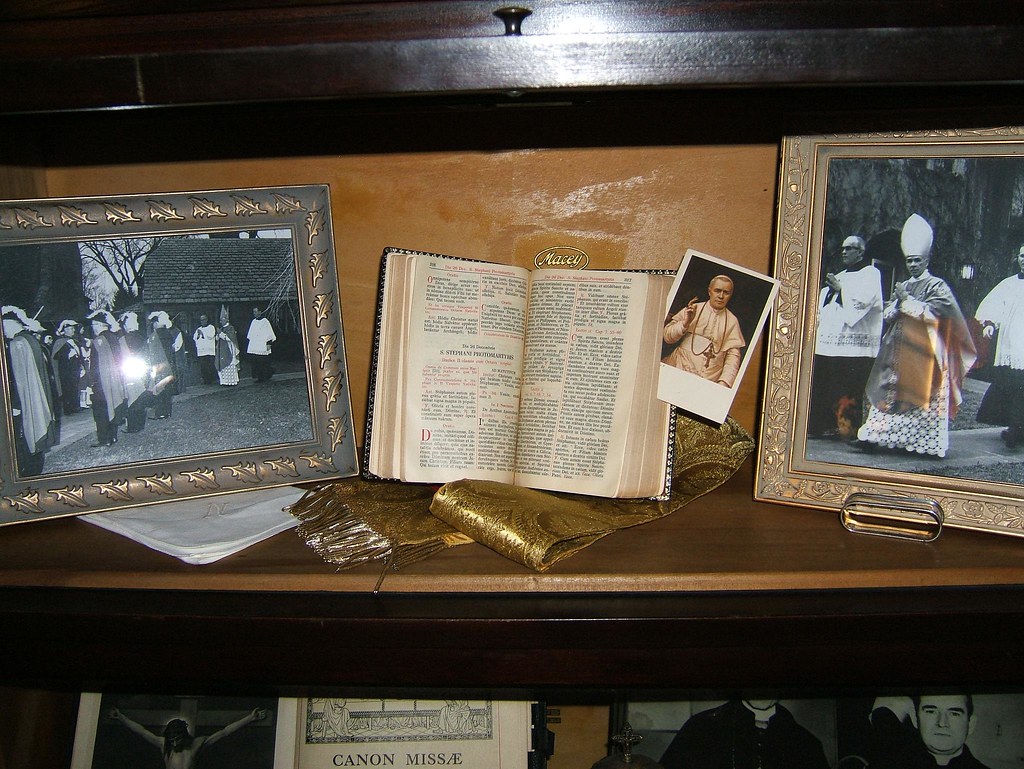"The word of God makes us change our concept of realism: the realist is the one who recognizes in the word of God the foundation of all things."
- Pope Benedict XVI, Post Synodal Apostolic Exhortation on the Word of God in the Life and Mission of the Church "Verbum Domini", 10.
"As the word of God became flesh by the power of the Holy Spirit in the womb of the Virgin Mary, so sacred Scripture is born from the womb of the Church by the power of the same Spirit."
- Pope Benedict XVI, "Verbum Domini", 19.
"Whenever our awareness of its inspiration grows weak, we risk reading Scripture as an object of historical curiosity and not as the work of the Holy Spirit in which we can hear the Lord himself speak and recognize his presence in history."
- Pope Benedict XVI, "Verbum Domini", 19.
"[S]ince Scripture must be interpreted in the same Spirit in which it was written, [...] the text must be interpreted with attention to the unity of the whole of Scripture."
- Pope Benedict XVI, "Verbum Domini", 34.
“Where exegesis is not theology, Scripture cannot be the soul of theology, and conversely, where theology is not essentially the interpretation of the Church’s Scripture, such a theology no longer has a foundation.”
- Pope Benedict XVI, "Verbum Domini", 35.
"[T]he word of God is living and addressed to each of us in the here and now of our lives."
- Pope Benedict XVI, "Verbum Domini", 37.
"As well as learning the original languages in which the Bible was written and suitable methods of interpretation, students need to have a deep spiritual life, in order to appreciate that the Scripture can only be understood if it is lived."
- Pope Benedict XVI, "Verbum Domini", 47.
“What is the distinctive mark of faith? Full and unhesitating certainty that the words inspired by God are true ... What is the distinctive mark of the faithful? Conforming their lives with the same complete certainty to the meaning of the words of Scripture, not daring to remove or add a single thing."
- Saint Basil the Great, Moralia, quoted in Pope Benedict XVI, "Verbum Domini", 48.
"Every saint is like a ray of light streaming forth from the word of God."
- Pope Benedict XVI, "Verbum Domini", 48.
"Christ’s body and blood are really the word of Scripture, God’s teaching. When we approach the [Eucharistic] Mystery, if a crumb falls to the ground we are troubled. Yet when we are listening to the word of God, and God’s Word and Christ’s flesh and blood are being poured into our ears yet we pay no heed, what great peril should we not feel?"
- St. Jerome, In Psalmum 147, quoted in Pope Benedict XVI, "Verbum Domini", 56.
"Generic and abstract homilies which obscure the directness of God’s word should be avoided, as well as useless digressions which risk drawing greater attention to the preacher than to the heart of the Gospel message. The faithful should be able to perceive clearly that the preacher has a compelling desire to present Christ, who must stand at the centre of every homily."
- Pope Benedict XVI, "Verbum Domini", 59.
In the Liturgy, "Preference should be given to songs which are of clear biblical inspiration and which express, through the harmony of music and words, the beauty of God’s word. We would do well to make the most of those songs handed down to us by the Church’s tradition which respect this criterion. I think in particular of the importance of Gregorian chant."
- Pope Benedict XVI, "Verbum Domini", 70.
"The Bishop, together with his priests and indeed like every member of the faithful, and like the Church herself, must be a hearer of the word. He should dwell ‘within’ the word and allow himself to be protected and nourished by it, as if by a mother’s womb”.
- Pope John Paul II, Post-Synodal Apostolic Exhortation "Pastores Gregis", quoted in Pope Benedict XVI, "Verbum Domini", 79.
“May the Lord himself, as in the time of the prophet Amos, raise up in our midst a new hunger and thirst for the word of God.”
- Pope Benedict XVI, "Verbum Domini", 91.
... Continue Reading this Article






















